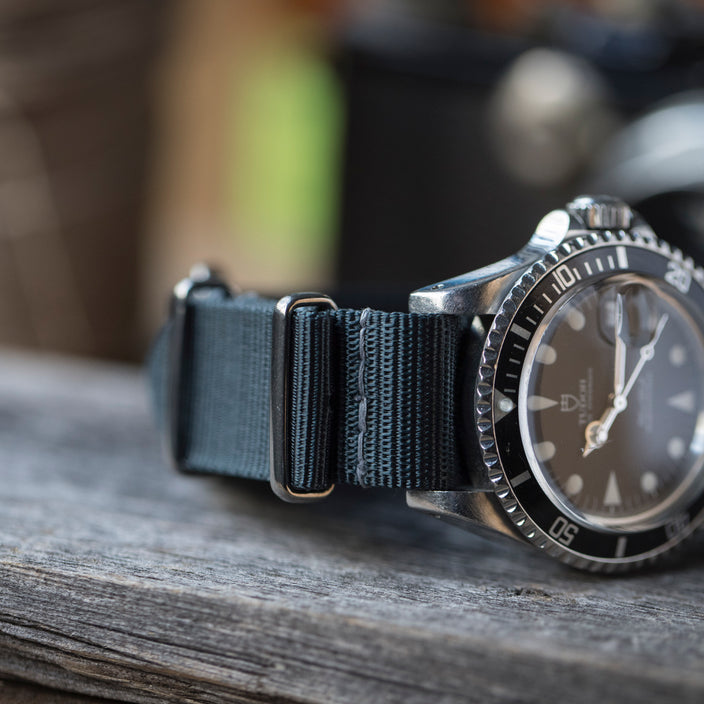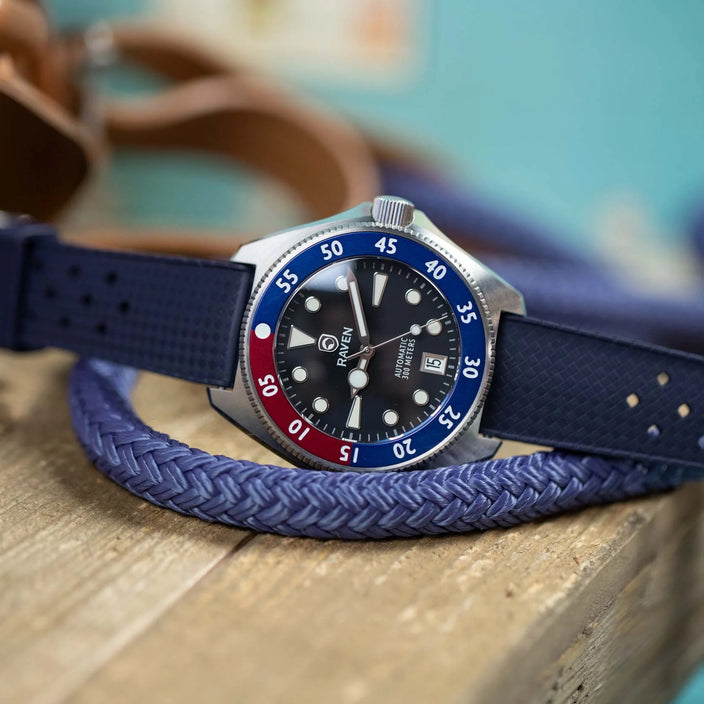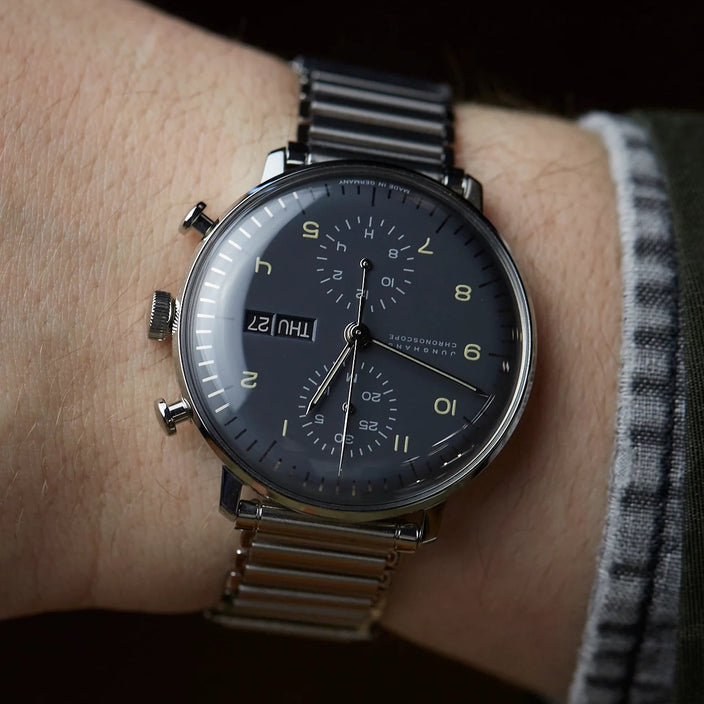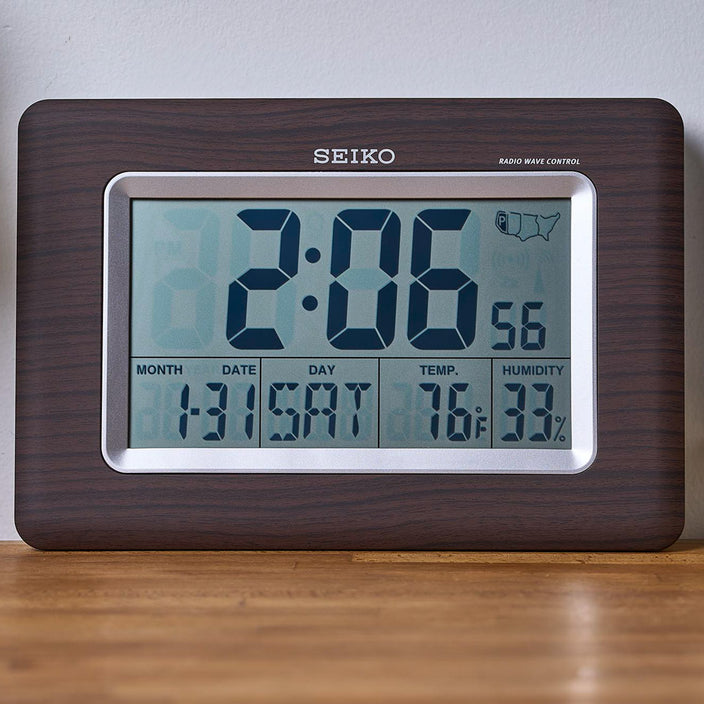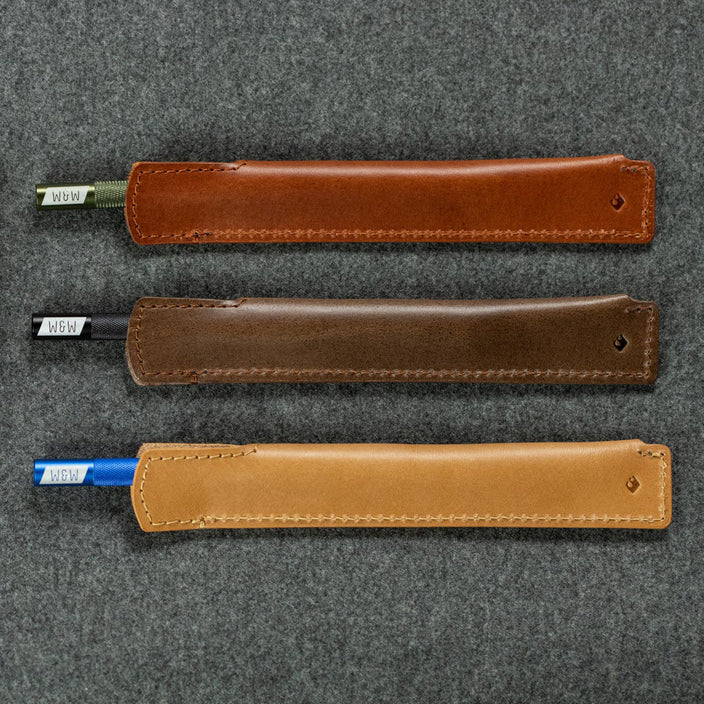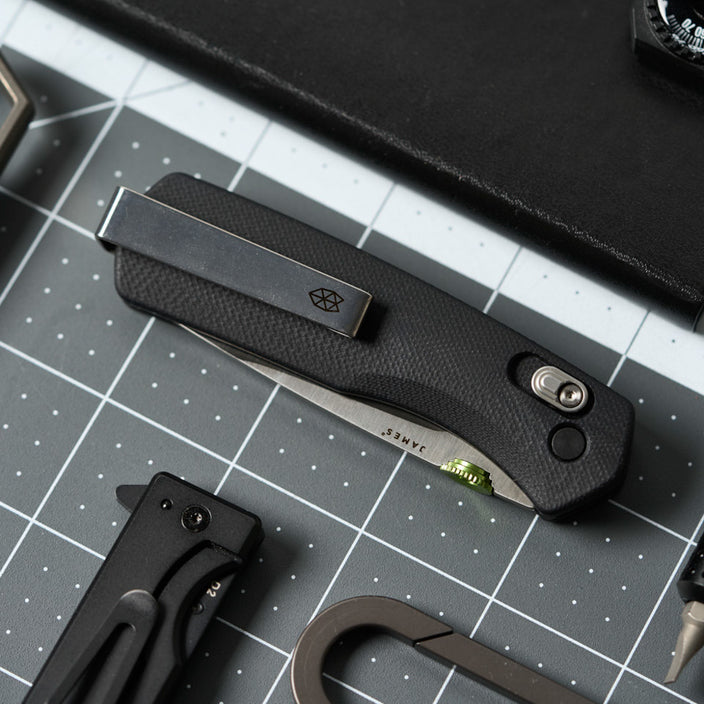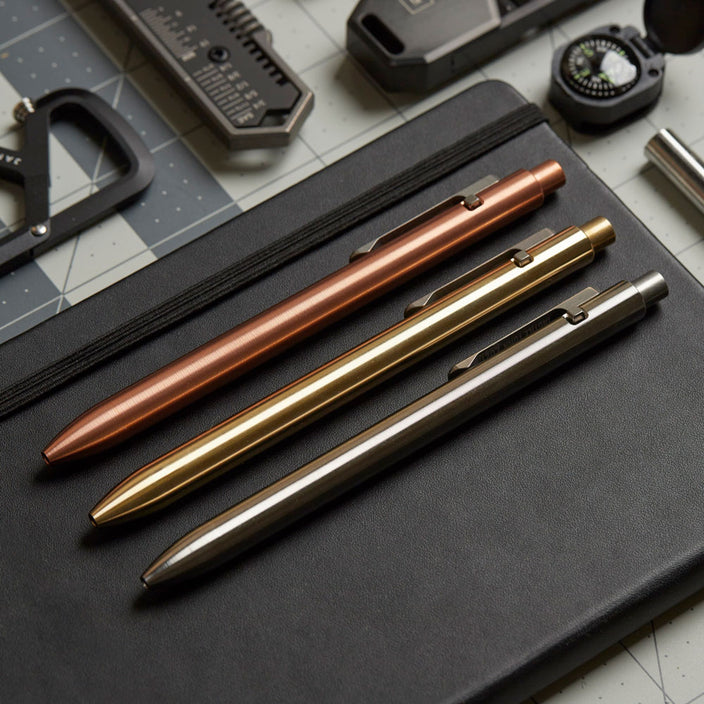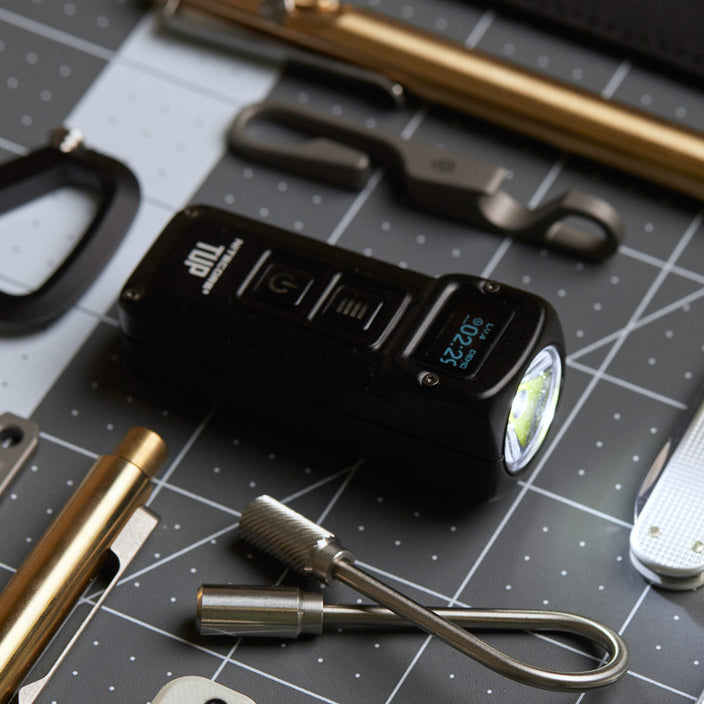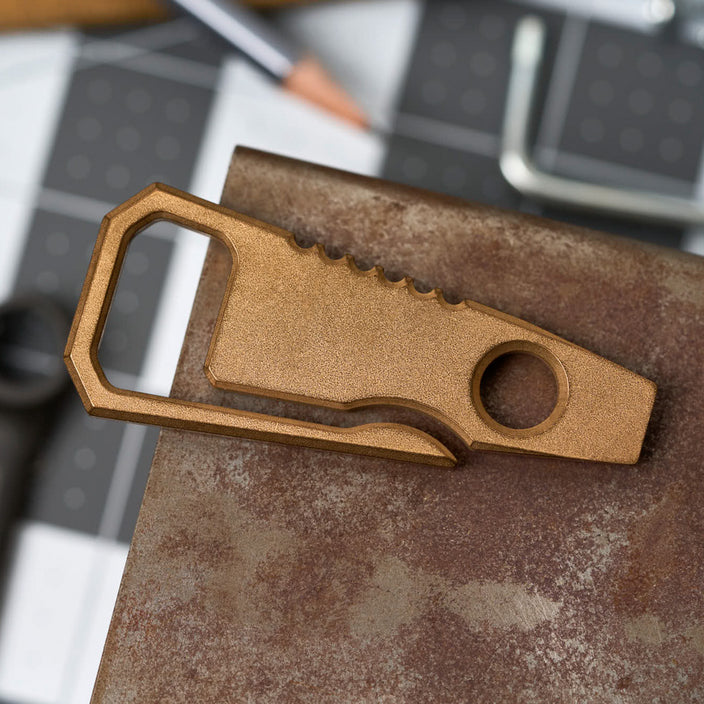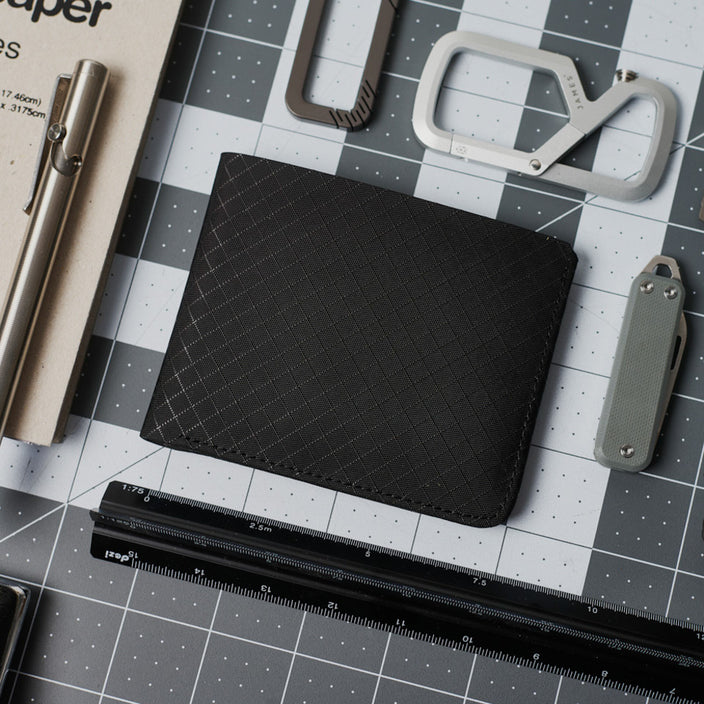
Nivada Grenchen enjoys a place in the mid 20th century as one of the premier quality watchmakers building timepieces for exploration. Its famous Chronomaster, Depthmaster, and Antarctic models are all legends in their respective fields. The F77, introduced in 1977, marked Nivada Grenchen’s foray into the “sport chic” watch category. Now reintroduced for the 20th century, the F77 remains true to its heritage while packing plenty of modern features. The exotic dial editions of the modern F77 showcase both special dials and material changes in the case and bracelet.
The Anthracite variant features the same basket weave pattern as the regular black, blue, and smoky brown versions, while the Aventurine is a stunning dark blue with white specks that resemble stars in space. The Météorite F77 is, true to its name, a light gun meteorite color and is truly unique. The Lapis Lazuli version features a regal Lapis Lazuli dial that cannot be replicated with any other material. The Aventurine and Lapis Lazuli F77 models retain the regular series’ stainless steel case, which is 37mm wide. The Anthracite and Météorite versions are made of Grade 5 Titanium (both case and bracelet). All cases are 45mm lug to lug, making them some of the most wearable sport integrated bracelet watches around.
Inside the Nivada Grenchen F77 exotic watches is the Soprod P024 movement, an automatically-winding caliber in its no-date configuration. It beats at 4Hz (28,800 vph) and offers 38 hours of power reserve. Water resistance is 100 meters.
- Case: Grade 5 Titanium
- Dial: Anthracite
- Movement: Automatic Soprod P024
- Complications: Seconds, Minutes, Hours
- Lens: Double-dome Sapphire
- Bracelet: Grade 5 Titanium
- Water Res.: 10 atm
- Diameter: 37 mm
- Length: 45 mm
- Thickness: 12.6 mm
- Bracelet Dimensions: 22mm x 16mm
- Warranty: 24 Months
- Case: Stainless Steel
- Dial: Aventurine
- Movement: Automatic Soprod P024
- Complications: Seconds, Minutes, Hours
- Lens: Double-dome Sapphire
- Bracelet: Stainless Steel
- Water Res.: 10 atm
- Diameter: 37 mm
- Length: 45 mm
- Thickness: 12.6 mm
- Bracelet Dimensions: 22mm x 16mm
- Warranty: 24 months
- Case: Grade 5 Titanium
- Dial: Meteorite
- Movement: Automatic Soprod P024
- Complications: Seconds, Minutes, Hours
- Lens: Double-dome Sapphire
- Bracelet: Grade 5 Titanium
- Water Res.: 10 atm
- Diameter: 37 mm
- Length: 45 mm
- Thickness: 12.6 mm
- Bracelet Dimensions: 22mm x 16mm
- Warranty: 24 Months
- Case: Stainless Steel
- Dial: Meteorite
- Movement: Automatic Soprod P024
- Complications: Seconds, Minutes, Hours
- Lens: Double-dome Sapphire
- Bracelet: Stainless Steel
- Water Res.: 10 atm
- Diameter: 37 mm
- Length: 45 mm
- Thickness: 12.6 mm
- Bracelet Dimensions: 22mm x 16mm
- Warranty: 24 months
Nivada Grenchen timepieces have been in the watchmaking industry since 1926, the year when Jacob Schneider first created it in Granges (Grenchen). In 1976, his son Max took over the business. In the United States of America (USA), the Croton Company distributed all Nivada Grenchen watches. The timepieces can have either the Nivada Grenchen or Croton signature, or both.
In 1930, Nivada Grenchen was one of the first companies to manufacture automatic watches. This led to the creation of Nivada Grenchen’s first waterproof automatic watch called the Antarctic in 1950. The watch was worn by the members of the American Navy’s Deep Freeze 1 during their expedition to the South Pole from 1955 to 1956.

